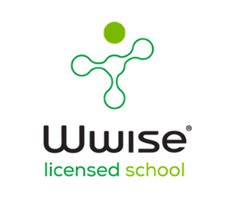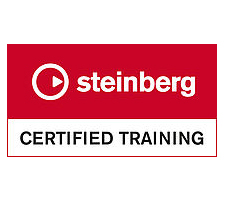John Crawford and Lisa Naugle – University of California, Irvine
Active Space is a digital media arts research project investigating embodied interaction through movement and other forms of dynamic expression, integrating body-centered performance practices with advanced user interface techniques. Activities include the development of real-world performative environments that continuously sense, measure and respond to movement, allowing participants to engage and “play the space” as an instrument. The results of this research are applicable to the performing arts, education, telepresence, rehabilitation medicine, and other areas.
Active Space environments are created using a collection of custom real-time media objects developed by intermedia artist and software designer John Crawford in association with choreographer Lisa Naugle and composer Martin Gotfrit. The environments also may incorporate optical motion capture and other advanced technologies for representing human movement. Incorporating the Max/Jitter system from Cycling ’74, the Active Space media objects include systems for multi-channel live video and audio processing, generative animation, musical composition, mediabase storage/retrieval and high bandwidth networking. Associated motion tracking objects perform real-time sensing and analysis of location, speed, duration and various other characteristics of movement. The results of this analysis are used to generate video and audio in response to movement.
Motion tracking involves real-time sensing and analysis of location, speed, duration and various other characteristics of movement. The results of this analysis are fed to a computer system that generates video and audio in response to the movement. Motion capture is the technique of sampling movement in 3D space and creating graphical representations of the movement. Typical applications of motion capture tend to produce realistic animations, but the aesthetic focus of our Active Space work goes beyond realism to explore notions of non-linear association, embodiment and reflexivity. The interplay between improvisational and compositional elements is of particular interest.
Workshop Outline
The Active Space & Max/Jitter Video Processing workshop, led by John Crawford, will be held September 16 to 21, 2013, culminating in two intermedia concerts at the end of the workshop, co-directed by Lisa Naugle and John Crawford. The sessions will be full-time, with a theoretical part and a practical part. Students will use the media programming system Jitter (with Max, from Cycling ’74) to realize a video processing project to be presented in the intermedia concerts.
The workshop will teach advanced video processing techniques for creating interactive systems, and through a combination of demonstrations, discussion and experiential exercises, workshop participants will have the opportunity to work with powerful computer-based interactive media tools such as Max, Jitter and Active Space. A collaborative research environment will encourage exploration of the media objects and provide opportunities for investigating issues of embodied interaction, developing and deepening vocabularies and techniques for structured improvisation, mediated performance and interface development.
Workshop topics will include the following features of the Jitter system:
– Movie Playback
– Live Video Input & Camera Control
– Video Mixing & Keying
– Image Control & Color Mapping
– Motion Tracking and Interactivity
– GPU Performance Optimization
– Control Surfaces & OSC
– Video & Control Networking
– Introduction to Gen
– Other Topics by Request
Research Objectives
A primary objective of the Active Space research is investigation of formal issues in mediated performance and installation through transdisciplinary projects where artistic vision and technical innovation share the spotlight.
In a performing arts context, the Active Space environment encourages exploration and experimentation. Often when technology is used in performance, the participants feel that the technology is “happening to them,” out of their control. Our approach is to create a setting that allows performers to influence and interact with technical elements in a direct, immediate way. The qualities of this interaction can generate new internal imagery and enhance the performers’ motivation, stimulating new forms of interaction between the performers themselves as well as with the technical elements. As dancers and media artists interact with the Active Space environment, its responses and behaviors become construed as mechanisms for communication. The media system itself becomes a message, or a series of messages, an embodied sequence of codes, exchanged among performers and between performers and audience.
For installations, the Active Space system responds directly to visitors and their motion, creating visuals and sounds that can influence the ways people move in the space. The resulting movement calls up new sequences of sounds and images, potentially inspiring participants to further improvisational movement explorations. This cycle of interaction is exciting to experience, entertaining to watch, and is adaptable to a wide range of performance, exhibition and workshop settings.
Active Space research is of particular interest to dancers, choreographers, musicians, composers, scenic and lighting designers, directors, actors, visual artists, animators, filmmakers, interface designers, computer scientists, engineers, architects, and anyone intrigued by issues of embodiment, technology and interactive experience.
Schedule of Classes
Wednesday, June 25 – 10:00 – 17:00
Thursday, June 26 – 10:00 – 17:00
Friday, June 27 – 10:00 – 19:30 | Concert at Conservatorio S. Cecilia
Monday, June 30 – 10:00 – 18:00
Tuesday, July 1 – 10:00 – 18:00
Wednesday, July 2 – 10:00 – 18:00
Thursday, July 3 – 10:00 – 18:00
Friday, July 4 – 10:00 – 18:00
Saturday, July 5 – 10:00 – 20:00



















